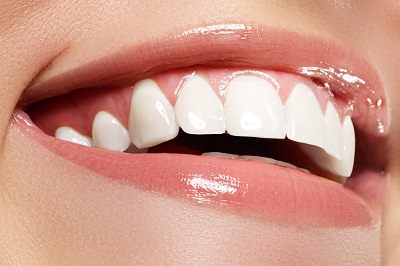Looking to get a brighter smile? The good news is you have options.

Let’s take a quick look at your options.
Whitening Toothpaste
Your first option is the most obvious and least expensive. You can simply start brushing your teeth with whitening toothpaste.
These toothpastes have mild abrasives like hydrated silica, sodium bicarbonate, and calcium carbonate to polish your teeth and remove surface stains. Some may even have low concentrations of active hydrogen peroxide to bleach teeth.
The results here are pretty minor, but it’s a good place to start. With twice-daily use, you can see some visible results in around a week, but don’t expect dramatic changes to your smile. You may slightly remove surface stains caused by things like drinking coffee or smoking, but you won’t be able to alter the natural color of your teeth or whiten a stain beyond your tooth’s surface.
Always look for a reputable toothpaste brand that has a seal of approval from the American Dental Association to ensure your toothpaste does not contain any harmful chemicals and is effective at removing surface stains. But if you’re not satisfied with the results and want something more, keep reading.
Whitening Strips
A whitening strip is a plastic strip that is used to apply a bleaching ingredient (usually hydrogen peroxide) directly to your teeth. Each session with your whitening strips typically lasts 30 minutes to two hours, and repeated use for up to three weeks should deliver decent results.
Strips are a very effective over-the-counter teeth whitener because the active ingredient is left on the teeth for an extended period of time. Whereas brushing your teeth only takes a couple of minutes, the strips stay on substantially longer.
The strips have an adhesive to keep them firmly in place on your teeth while the hydrogen peroxide or carbamide peroxide goes to work and bleach your teeth. For best results, apply your strips before bedtime each night until you run through your pack.
Teeth Whitening Trays
Teeth whitening or teeth bleaching trays are becoming more popular and now fill the counters of major drug store chains. These teeth whitening kits help users achieve a brighter smile in a similar fashion to whitening strips.
Over-the-counter teeth whitening trays are usually made of a flexible material that molds to your teeth. This mold allows for whitening on the surface as well as in between your teeth.
While over-the-counter kits can be effective and produce great results, people often have better luck when they get whitening trays from their dentist. A dentist can create a custom-made mold that is specifically fitted for your mouth. The tray will fit over your teeth perfectly which helps whiten your teeth better as well as produce even results.
Teeth whitening trays can be pre-filled with a peroxide-based whitening agent or come with a syringe of whitening gel to add to the tray yourself at home. Like with the whitening strips, you’ll use two trays per day and discard them when you have finished a session. However, whitening trays typically stay on your teeth longer than strips.
Whitening Light Devices
Yes, this is actually a thing. But let’s bust a quick myth here: the only laser teeth whitening light that actually works are those UV lights that are offered at your dentist. Anything else is a phony.
With this method, a whitening agent is applied directly to your teeth. A blue LED light is then held over them to increase the penetration of the agent and accelerate the results. These in-office procedures can dramatically speed-up the whitening process. But again, only in-office LED lights are approved by the FDA and may only be operated by registered dentists. All others are ineffective, illegal, and likely unsafe.
One further item to note here is that in-office laser whitening is not an option for those with sensitive teeth.
In-Office Treatment Options
As we’ve already mentioned, two options from your dentist include take-home whitening trays and LED light whitening treatments.
While the above take-home methods can remove surface stains and create a whiter smile, it might not quite get to the level of sparkling white that you had in mind. For a truly white smile, the only option is to have your dentist create custom take-home trays for you. They may use LED treatment in the office as well as take-home trays.
Always take great care when using any whitening products, as they can make sensitive teeth and gums worse due to poor-fitting trays. Also, keep in mind that if you have any resin fillings and crowns or false teeth that whitening agents will only work on your natural teeth. This might give you an uneven smile and can even create gray teeth.
Summary
Bottom line: always consult with your dentist before you begin any whitening treatment to get advice on the best treatment option for your individual goals. Whatever treatment you choose, make sure to keep up with brushing and flossing regularly to ensure you maintain your new and improved smile.
Ready for a cleaning and to learn more about your whitening treatment options? Schedule an appointment today!
